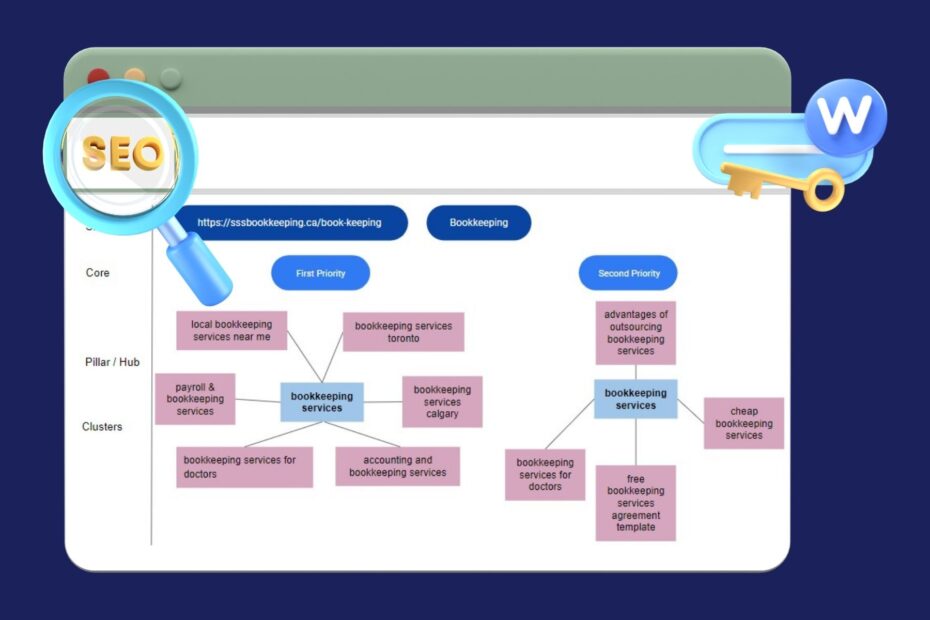Creating a keyword mapping strategy is an important part of search engine optimization (SEO), but it’s not always easy. Keyword mapping involves creating a list of keywords and their search volume, then prioritizing those by relevance to your website and how much traffic they get from Google. The more keywords you add to your list, the more difficult it becomes to find time for this effort—but if you prioritize carefully, keyword mapping can help increase traffic to your website.
What is a keyword mapping strategy?
Keyword mapping is a process that helps you create content for your website. It helps you find keywords that are relevant to your website, and then use those words in blog posts, images or videos.
Keyword mapping can help increase traffic to your site by ranking higher in search engines like Google and Bing.
Keyword Mapping Strategy
Keyword mapping is a way to improve search engine optimization (SEO), conversion rates, and website traffic.
- SEO: If you want your site to rank well in search engine results pages (SERPs), you need to use the right keywords in your content. The best way to do this is by using keyword research tools and mapping out which terms people are searching for most often on Google or other search engines such as Bing or Yahoo! Search Marketing Blogs have compiled lists of top 10 keywords that should be included in content marketing efforts because they’re “trending” at any given time; these same firms can also provide advice on how best use those terms so that they get picked up by users who are looking for them specifically when doing their searches online
Keyword Mapping Strategy Tools
There are a lot of tools, but we’re going to focus on the ones that are most commonly used.
Google Keyword Planner: The easiest way to find out what people search for and how often they do it. It also gives you an idea of the competition in your field, so you can see which keywords have more competition than others.
SEMrush: A keyword research tool that helps marketers track their performance across various metrics like traffic, conversions and revenue per click (CPC). You can use SEMrush’s free version or upgrade at any time.
How do I use keyword mapping?
The first step to using keyword mapping is figuring out what you want your site to be. After all, if you don’t know what kind of content it is going to take, then how can you know where best to invest your time and money?
When creating a content strategy for a website or blog, it’s essential that you’re able to answer questions such as: How much time do I have? What kind of expertise do I have in this field? How much money will this cost me (if any)? Do my existing skills align with the needs of my audience? And so on…
Step 1: Research keywords
Before you can create a keyword mapping strategy, it’s important to know what people are searching for online. This is known as keyword research. There are many tools available to help with this process, but the most important thing is to start with something simple like Google Trends or Keyword Planner.
Once you’ve identified the top keywords based on volume and competition, then you can use those terms in your content strategy and target them further down the road with ads or ads groups (if applicable).
Step 2: Create a list of keywords and their search volume
The next step is to create a list of keywords and their search volume. This will help you prioritize which keywords are most valuable to your audience, based on the number of people who use them and how often they click through to your site.
Keyword research is key here—you need to find out what words people type into search engines when they’re looking for something related to your product or service. For example, if you sell weight loss supplements online, “weight loss” might be a good keyword because many people use it when they’re searching online (especially if there’s an abundance of competing pages). However, this doesn’t necessarily mean that it should be one of the top priorities in mapping out strategies for building up traffic from new visitors; instead, focus on finding top-ranking competitors’ URLs so that visitors can get more information about each company’s offerings before making any purchases!
Step 3: Prioritize keywords by search volume and relevance to pages
Now that you’ve identified your top keywords, it’s time to prioritize them. The key here is to focus on the most relevant keywords first and then work your way down.
To do this, use a keyword mapping tool like Ahrefs Keyword Explorer or SEMrush Keyword Planner (which also provides analysis of organic search volume). These tools will help you prioritize by relevance and search volume as well as show you how many times each keyword appears in Google organic results.
Keyword mapping can help you increase website traffic by helping your pages appear in searches.
Keyword mapping is a great way to increase website traffic.
It can help you improve your SEO, create a more consistent user experience and increase conversions.
As we’ve seen, keyword mapping can be a great way to increase traffic and make your website more search engine friendly. Keyword mapping also provides an opportunity to learn about the keywords that people use when they search for products or services online. With this information, you can improve the relevancy of your content by including more relevant keywords in your pages.
